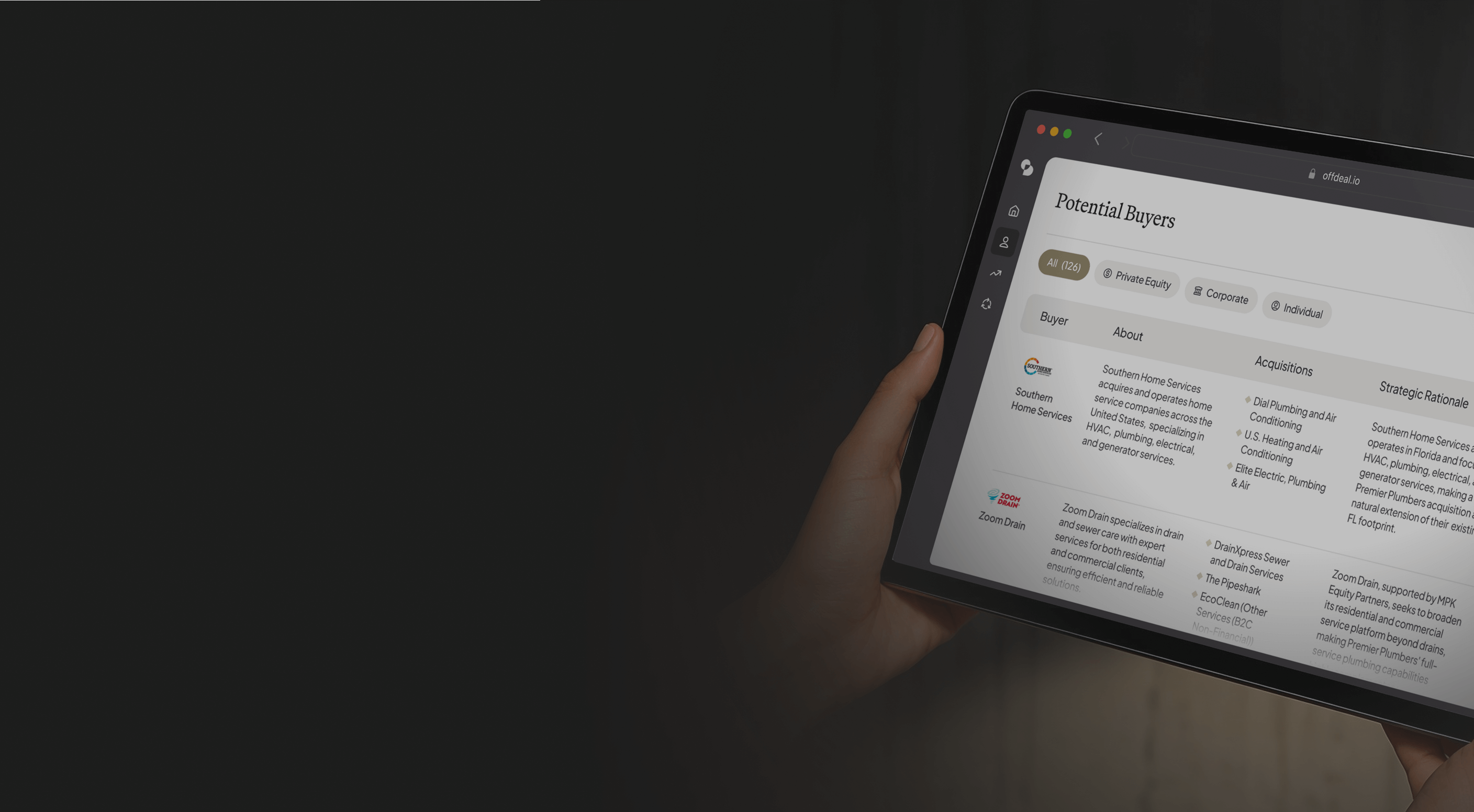Article
April 3, 2025
How Trump’s 2025 Tariffs Impact Landscaping Businesses
Tariffs are changing the Landscaping industry—here’s how business owners can prepare and adapt

Table of Contents
Running a successful landscaping business already requires understanding seasonal cycles, dealing with shortages of workers, managing fuel costs, and competing effectively in the market. Now, there is another important economic issue to consider: the Trump administration's "Reciprocal Tariff Policy," which was introduced by executive order in April 2025. This new policy places high additional taxes (tariffs) on many imported products, likely disrupting the supply chain and raising costs for essential landscaping equipment, materials, and supplies. For landscaping businesses, it's important to understand this policy and its consequences in order to protect profit margins, keep quality service levels, and ensure the long-term success of your business.
If landscape business owners ignore these economic changes, they could face unexpected price spikes, have trouble getting necessary tools and materials, and face growing pressure on their prices in an already price-sensitive market. This guide explains clearly what landscaping business owners need to know:
The main details of the "Reciprocal Tariff Policy" affecting landscaping.
How specific landscaping supplies (tools, equipment, materials) might be impacted.
Why landscaping businesses are especially vulnerable to supply chain disruptions.
How these tariffs might affect your operating costs, pricing strategy, cash flow, and business value.
Helpful, actionable steps to lessen risks and prepare your business.
Understanding the "Reciprocal Tariff Policy" and Its Influence on Landscaping
This new policy applies extra taxes on many goods imported into the U.S. Understanding how these tariffs function will help you know if your landscaping business may be affected.
How Tariffs Work (Quick Overview)
Baseline Tariff (April 5, 2025): A new 10% tariff added broadly to imports from most countries.
Country-Specific Tariffs (April 9, 2025): Higher tariffs replace the basic 10% for imports from certain listed countries.
Important Tariff Examples for Landscaping Supplies:
Pay attention if your equipment, materials, or parts come from these countries:
China (34%): Small engines, hand tools, irrigation parts, landscape fabric, certain stone/tiles, solar lighting parts.
European Union (20%): Specialized equipment (mowers, chainsaws), premium hand tools.
Japan (24%): High-quality small engines (Honda, Kawasaki).
Vietnam (46%): Plastic parts, some tools.
South Korea (25%): Electronics for smart irrigation systems and lighting.
Taiwan (32%): Electronics for irrigation controllers and timers.
India (26%): Ingredients for fertilizers, certain stone or paving materials.
(Note: Tariffs typically add to import costs already in place.)
Important Exceptions and Details for Landscapers
Not everything faces new tariffs. Some exceptions relevant to landscapers are:
Existing Steel and Aluminum Tariffs: Previous tariffs on metal products (steel mower decks, trailer frames) continue as they were.
USMCA Partners - Canada and Mexico typically exempt if goods meet rules for origin; goods not meeting these rules can still get taxed.
Specific Product Exemptions: A few basic electronics parts (like simple chips) might not face tariffs. But core equipment (mowers, trimmers) and most materials aren't exempt.
U.S. Content Provision: If a product made overseas contains 20% or more American-made parts, tariffs apply to the imported portion only, lowering the tariff impact slightly if assembled in the US.
Low-Value shipments: Imports worth less than $800 stay duty-free, helpful for small replacement part orders.
Agricultural Products: Plants and seeds have complex rules, but ingredients for fertilizer/pesticides will usually face these tariffs if imported from affected countries.
Why Landscaping Businesses Are Especially Vulnerable
Landscaping companies are vulnerable due to their reliance on imported equipment and key materials.
Reliance on Imported Equipment and Parts
Landscaping businesses depend heavily on equipment made in countries facing these tariffs:
Mowers: Often use engines from China or Japan.
Handheld Equipment (trimmers, blowers, chainsaws): Typically imported from Asia and the EU.
Small Engines: Regularly imported from Japan or China.
Sprayers and Spreaders: Key parts (pumps, nozzles) often imported from Asia.
Hand Tools: Imported extensively from China.
Irrigation equipment: Components like tubing, valves, and electronics made overseas.
Landscape Lighting: LED and solar lighting components commonly imported from Asia.
Imported Landscaping Materials and Supplies
Fertilizers and pesticides ingredients from China or India.
Hardscaping Materials (stone pavers and tiles) often imported from China, India, and the EU.
Landscape Fabric and Textiles imported primarily from Asia.
Vehicles and trailers made from materials like steel/aluminum might see existing metal tariffs increasing costs even more.
Complex Multi-Level Supply Networks:
Landscapers buy from local suppliers, who buy from national distributors or manufacturers relying on imports. This complexity means tariff-related costs will trickle down to landscapers, causing higher prices and shortages without clear transparency about origins.
Pressure from Price-Sensitive Customers and Contracts:
Landscapers often bid on projects or sign fixed-price contracts. Sudden cost hikes from tariffs can greatly reduce profits since clients expect consistent, competitive prices.
Risks to Landscaping Businesses from Tariffs:
Higher Costs: Expect increased pricing for equipment, replacement parts, hardscaping materials, fertilizers, irrigation parts, lighting, and more. More money spent on inventory means less cash available.
Supply Shortages: Tariffs might cause availability issues and delays. Be ready for suppliers suggesting alternative products or brands that experience fewer tariff impacts.
Pressure on Contracts and Pricing: Higher costs force you to either raise your prices (risking lost customers) or absorb the costs yourself (hurting profits).
Financial Stress: Higher operational costs, reduced cash flow, and decreased profits can negatively affect your business valuation.
Steps for Landscaping Businesses to Manage Tariff Risks:
To lower these risks, consider these steps:
Review your Supplies: Identify clearly which products you buy from tariff-affected countries. Check with your suppliers about price and availability impacts early.
Calculate Impact: Estimate how much key items may increase. Update cost estimates and bidding methods immediately.
Consider Alternatives: Research equipment brands with more domestic (or tariff-free) parts. Consider locally sourced stone or supplies. Explore operational changes to reduce reliance on higher-cost imports.
Update Pricing and Contracts Carefully: Adjust your pricing to reflect new realities. Consider adding contract clauses (such as surcharges), and communicate changes openly to customers.
Increase Efficiency: Minimize waste, shorten driving times/routes, maintain equipment regularly, and carefully manage inventory to control costs.
Stay Closely Informed: Monitor tariff changes through industry news and government sources. Stay in touch with industry associations and contacts for updates.
Summary: Preparing Your Landscaping Business for Increased Costs
The new 2025 tariffs affecting imported goods add significant cost pressures for landscaping businesses. With equipment, materials, and supplies getting more expensive and possibly harder to find, taking a proactive approach is essential.
To thrive amid these new economic realities, consider these key actions:
Audit your supply chains.
Calculate your financial risk.
Talk with your suppliers early and plan ahead.
Pick alternatives wisely—brands and local materials less impacted by tariffs.
Adjust pricing and contracts thoughtfully and openly.
Improve your internal business efficiency and reduce waste.
Stay informed about tariff changes and policy updates.
By carefully examining your risks and taking these steps, your landscaping business can better handle these tariff-driven economic challenges and successfully continue to grow.

Preview Buyers for Free
Try our buyer match tool to receive a personalized list of active buyers in your industry

